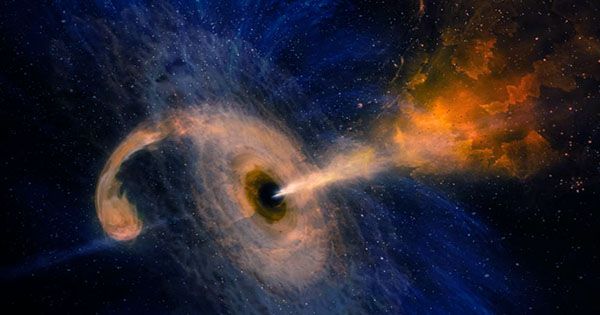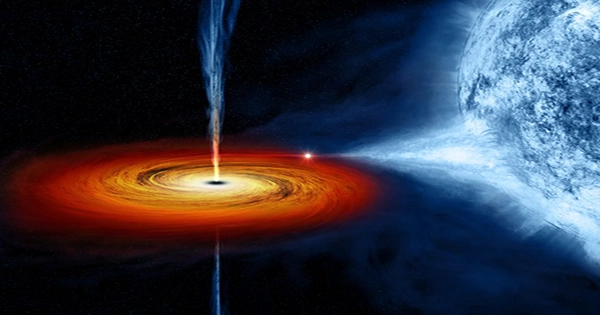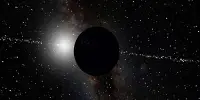The Max Planck Institute for Extraterrestrial Physics (MPE) researchers have discovered an intriguing repeating event in the eROSITA all-sky survey. An X-ray flare occurs repeatedly every 220 days in a galaxy that is otherwise dormant, suggesting that a star orbiting the black hole’s center “feeds” the gravitational monster on subsequent orbits. The accretion process and the gravitational field of supermassive black holes in distant galaxies may be effectively studied using such events.
In the journal Astronomy & Astrophysics, the findings are presented.
The majority of galaxies include a supermassive black hole at their center and data point to a mutually beneficial growth of the host galaxy and the black hole. These investigations primarily focus on “active” galaxies or those where the core black hole is continuously accreting significant amounts of matter, causing it to heat up and flash extremely brilliantly. However, quiescent galaxies, in which it is far more difficult to deduce the presence of the nuclear supermassive black hole, considerably outnumber these active galaxies (or active galactic nuclei, or AGN).

Sometimes, in a phenomenon known as a “tidal disruption event,” a star may go too close to the galaxy’s black hole, disturbed by the powerful tidal forces it generates. As a result of these occurrences, the star begins to lose material to the black hole, briefly increasing the gravity monster’s fueling rate and igniting an X-ray flare.
Tidal disruption events are rare, occurring in each galaxy around once per 10,000 years, and the majority of candidates that have been observed so far are singular occurrences that produce only a single flare as a result of the star’s demise. A few transients that exhibit recurring or periodic flares have recently been reported. These might result from stars that are fortunate enough to survive their initial collision. The remnant orbits the supermassive black hole, losing some of its outer layers and feeding the black hole with each passage rather than being entirely shattered.
According to Zhu Liu, the study’s principal author from MPE, “Such recurring partial disruption occurrences could be useful instruments to research the accretion process around supermassive black holes.” In an otherwise dormant galaxy, “using eROSITA we observed a really exciting recurring nuclear transient.”
The eROSITA X-ray telescope discovered high-energy transients in galaxies that showed no signs of preceding activity at their centers during its all-sky scan by repeatedly observing every place on the sky. The newly detected source, J0456-20, was found in a dormant galaxy around 1 billion light-years away in February 2021. It is one of the most erratic X-ray sources that eROSITA has observed, with a weekly flux reduction of a factor of 100.
The recurring X-ray bursts from the source had a total recurrence duration of about 220 days, and the astronomers were able to observe three full cycles of them. In contrast to the recurrent X-ray flares, which strongly point to a repeating partial tidal disruption event, follow-up optical investigations revealed a normal quiescent galaxy.
According to Adam Malyali, a postdoc at MPE, “We estimate that the star orbiting the black hole lost the equivalent of 5%, 1.5%, and 0.5% of the mass of our Sun in its first, second, and third visits, respectively.” The star may endure numerous partial disruption incidents because these losses are so minimal.
The researchers also found transient radio emissions from J0456-20 in cooperation with the Australian ATCA facility, which pointed to the start of a jet or a gas outflow. There is strong evidence for changes in the structure of the accretion disk surrounding the supermassive black hole, along with the typical X-ray development.
According to Andrea Merloni, chief scientist on eROSITA, “More follow-up observations are needed to pin down the precise specifics of the physical processes.” “However, the finding of this recurring X-ray outburst already offers compelling proof that stars outside of the Milky Way galaxy are in close orbits around supermassive black holes. These provide the appropriate testing grounds for the strong field domain of general relativity.”
Other recurring X-ray sources, such as two quasi-periodic AGN outbursts, have already been discovered by eROSITA. With eROSITA and the planned Einstein Probe mission, scientists hope to find additional occurrences in the future.














